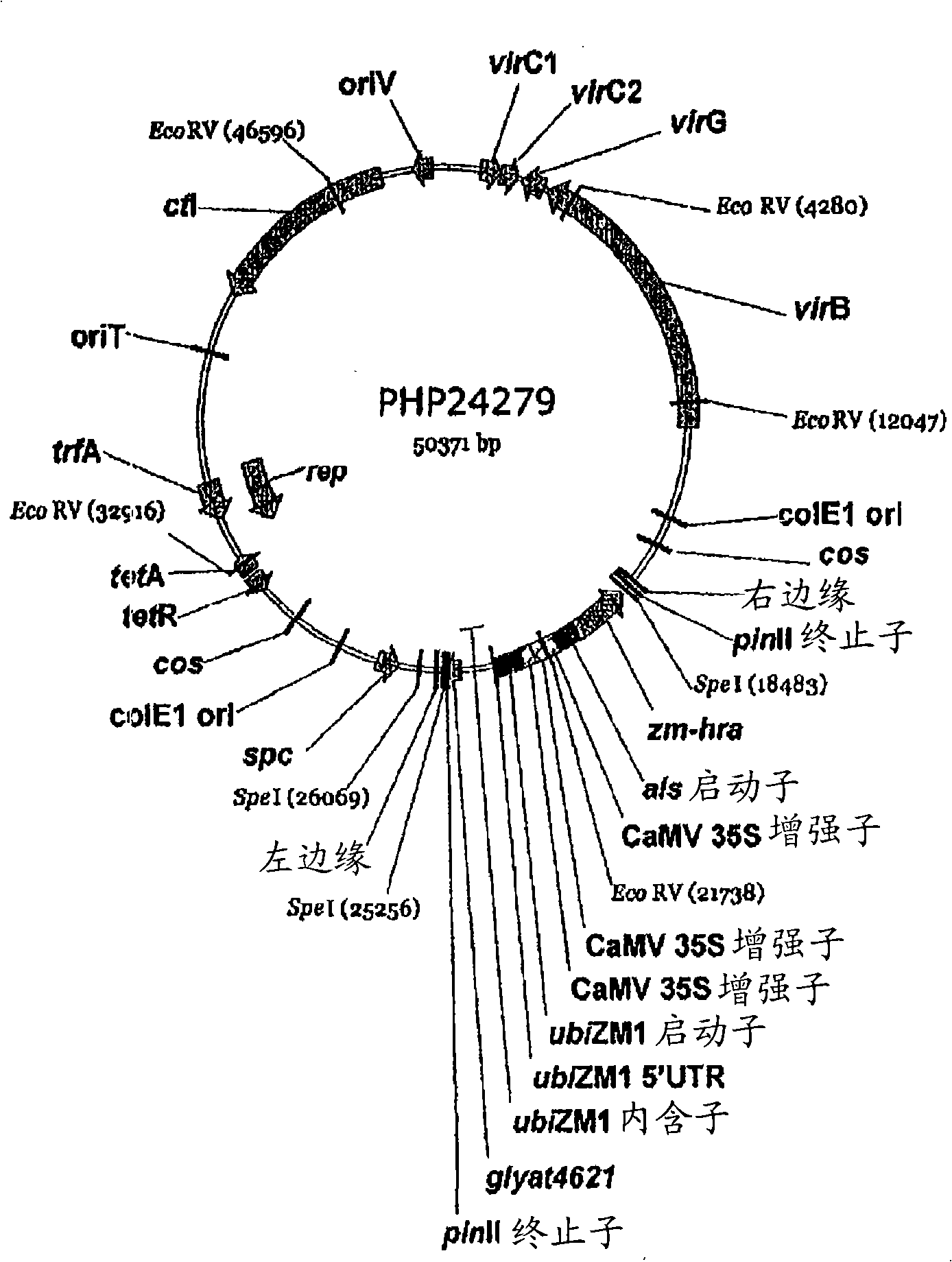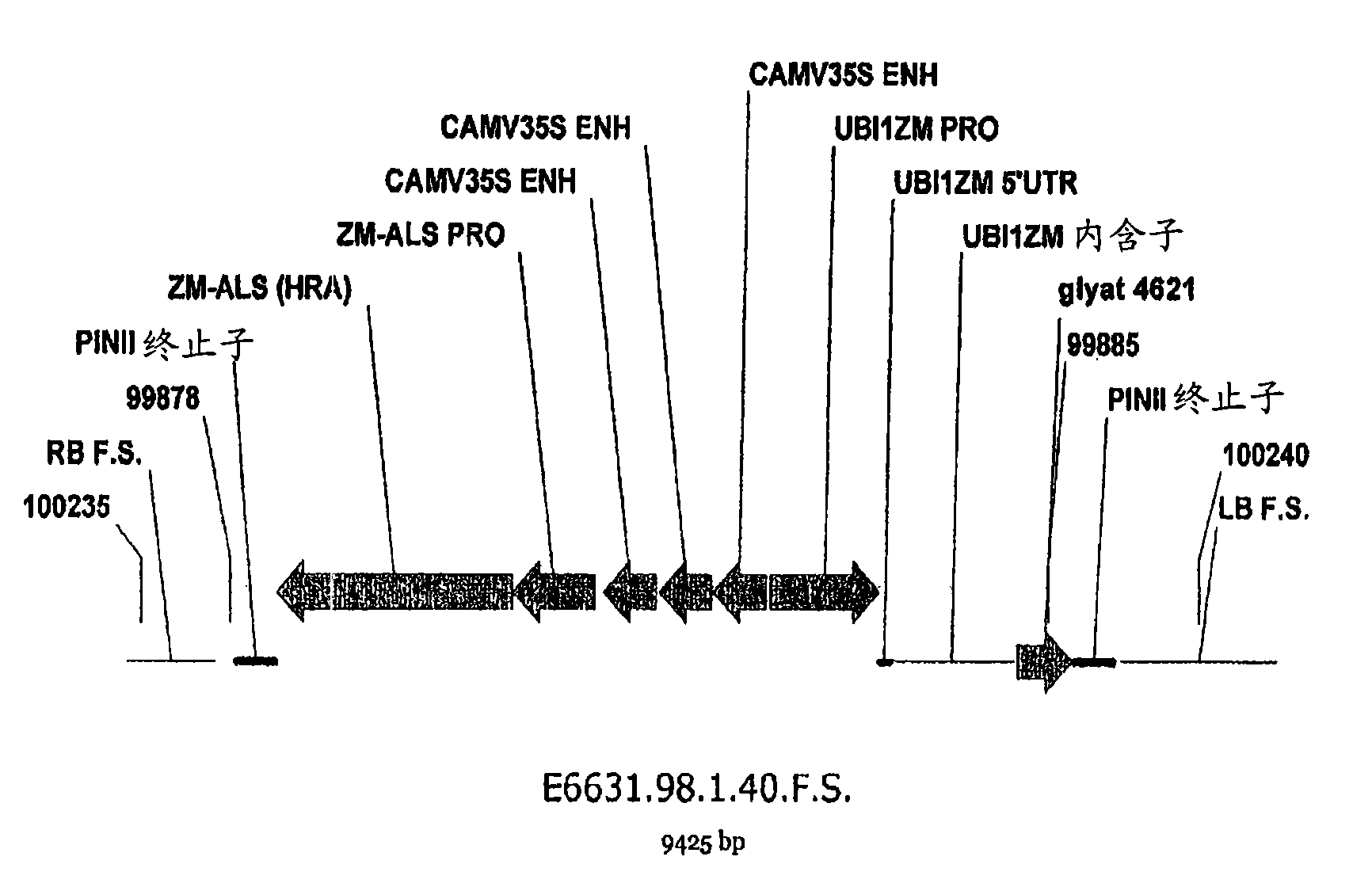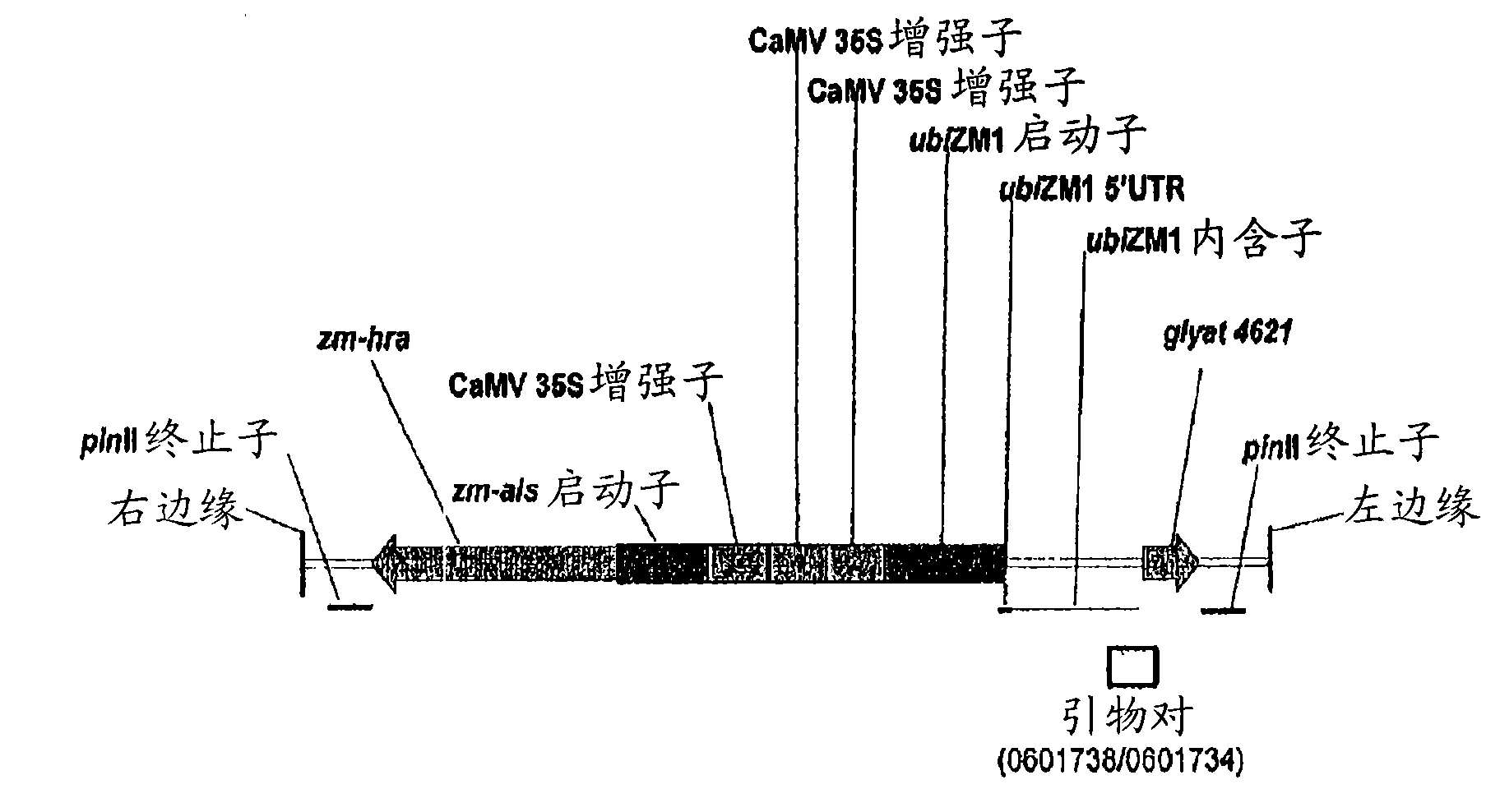Maize event dp-098140-6 and compositions and methods for the identification and/or detection thereof
An event, plant technology, applied in the field of molecular biology, can solve the problem of transgene insertion affecting endogenous gene expression and so on
- Summary
- Abstract
- Description
- Claims
- Application Information
AI Technical Summary
Problems solved by technology
Method used
Image
Examples
Embodiment 1
[0602] Example 1: Sequence table of inserts and flanking edges of corn event DP-098140-6 Sign
[0603] The modification was performed by inserting the glyphosate acetyltransferase gene (glyat4621) and the maize acetolactate synthase gene (zm-hra) derived from Bacillus licheniformis into maize (Zea mays) in a modified form. The vector used for genetic modification is the plasmid of Agrobacterium tumefaciens strain LBA4404, which eliminates the pathogenicity by removing its natural T-DNA. By using the plasmid PHP24279 ( figure 1 The Agrobacterium-mediated transformation of) obtained corn event DP-098140-6. The T-DNA of plasmid PHP24279 contains two expression cassettes which will be described further below.
[0604] The immature embryos of maize were aseptically removed from the developing caryopsis and treated with the Agrobacterium tumefaciens strain LBA4404 containing GLYAT4621 and ZM-HRA expression cassette. After the embryo and Agrobacterium are co-cultured in a solid medium...
Embodiment 2
[0637] Example 2. Characterization of corn event DP-098140-6 by Southern blotting
[0638] The DNA inserted into DP-098140-6 (hereinafter referred to as "98140") corn was characterized by Southern blot analysis. Table 8 summarizes the results from various Southern blot analyses. The method used is described below. Genomic DNA was extracted from freeze-dried leaf tissue sampled from 98140 corn and non-genetically modified control plants. The genomic DNA was digested with restriction enzymes and separated by size on an agarose gel. Run a molecular weight marker next to the sample to estimate the size. The DNA fragments separated on the agarose gel are depurinated, denatured and neutralized in situ; then transferred to a nylon membrane. After transfer to the membrane, the DNA is bound to the membrane by UV cross-linking. The fragments homologous to the glyat4621 and zm-hra genes were generated from the plasmid PHP24279 by PCR, separated on an agarose gel by size, cut, and puri...
Embodiment 3
[0650] Example 3: Expression of insert
[0651] The expression of GLYAT4621 and Zm-HRA protein was evaluated in leaf tissue collected at the V5 stage of the growth of cultivated plants in the greenhouse. For each sample, four fresh leaf perforations were collected and ground in extraction buffer using GenoGrinder (Spex Certiprep). Bio-Rad protein analysis was used to determine the total extractable protein (TEP), which is based on the Bradford dye binding method. The sample extract was diluted in sample extraction buffer for ELISA analysis.
[0652] GLYAT4621 and ZM-HRA ELISA utilize a "sandwich" model to quantify specific target proteins in plant tissue extracts. In these analyses, standards (triplicate wells) and samples (duplicate wells) are incubated in a fixed plate that has been pre-coated with antibodies specific for the protein of interest. After one hour of incubation, unbound material was washed away from the plate and the bound protein was incubated with different pr...
PUM
 Login to View More
Login to View More Abstract
Description
Claims
Application Information
 Login to View More
Login to View More - R&D
- Intellectual Property
- Life Sciences
- Materials
- Tech Scout
- Unparalleled Data Quality
- Higher Quality Content
- 60% Fewer Hallucinations
Browse by: Latest US Patents, China's latest patents, Technical Efficacy Thesaurus, Application Domain, Technology Topic, Popular Technical Reports.
© 2025 PatSnap. All rights reserved.Legal|Privacy policy|Modern Slavery Act Transparency Statement|Sitemap|About US| Contact US: help@patsnap.com



